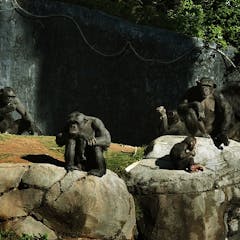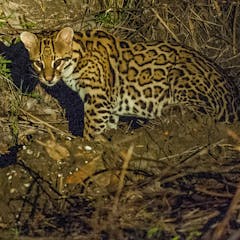
Articles on Zoos
Displaying 1 - 20 of 68 articles

Just as the world’s zoos breed critically endangered animals in captivity to repopulate the wild, scientists are building a global effort to freeze corals for reef restoration.

Zoo-based research can teach us about the needs of animals in our care.

Zoos have the potential to do more for growing conservation science and practice.

Surviving solely in zoos and botanic gardens are 33 animal and 39 plant species.

Vale Tricia: the beloved Asian elephant called Perth Zoo home since 1963. Her death has led to an outpouring of grief in Perth, especially among zookeepers and her fellow elephants.

Historians aren’t sure exactly when the first zoo was built, but it’s clear humans have kept exotic animals for thousands of years.

Ukraine’s zoos are struggling to look after their animals, but are getting international support.

A growing body of research shows that COVID-19 protocols should be extended to areas in which there is a human-animal interface such as zoos, wildlife sanctuaries and game farms.

A fundamental change in how North American zoos and aquariums are accredited supports their animal conservation and species survival work.

There are so few wild ocelots in the US that the cats are becoming inbred, with a bad prognosis for their ultimate survival. But researchers are perfecting ways to get new genes into the population.

The lawsuit resembles earlier legal efforts to make tobacco companies remedy wrongdoing.

Life in captivity causes observable harm to the structure and function of large mammals’ brains.

Zoos are struggling more than most businesses.

One aquarium in Japan has asked the public to make video calls to captive garden eels so they don’t forget about human visitors.

Freedom of movement for survival.

People can still learn a great deal about these mammals while keeping a safe distance.

The main food for the mountain pygmy-possum’s spring/summer breeding season is the migratory bogong moth, but in 2017 and 2018 billions of bogong moths failed to arrive. Then the bushfires did.

The slaughtered tigers were not bred in zoos, yet their story should put captive breeding in general into question.

Data collected by zoos can help scientists model the populations of endangered species.

Here’s some advice on taking selfies with wild animals: don’t. It’s not fun for the animal, and can have serious knock-on effects for their health. And you could be injured (or worse).
